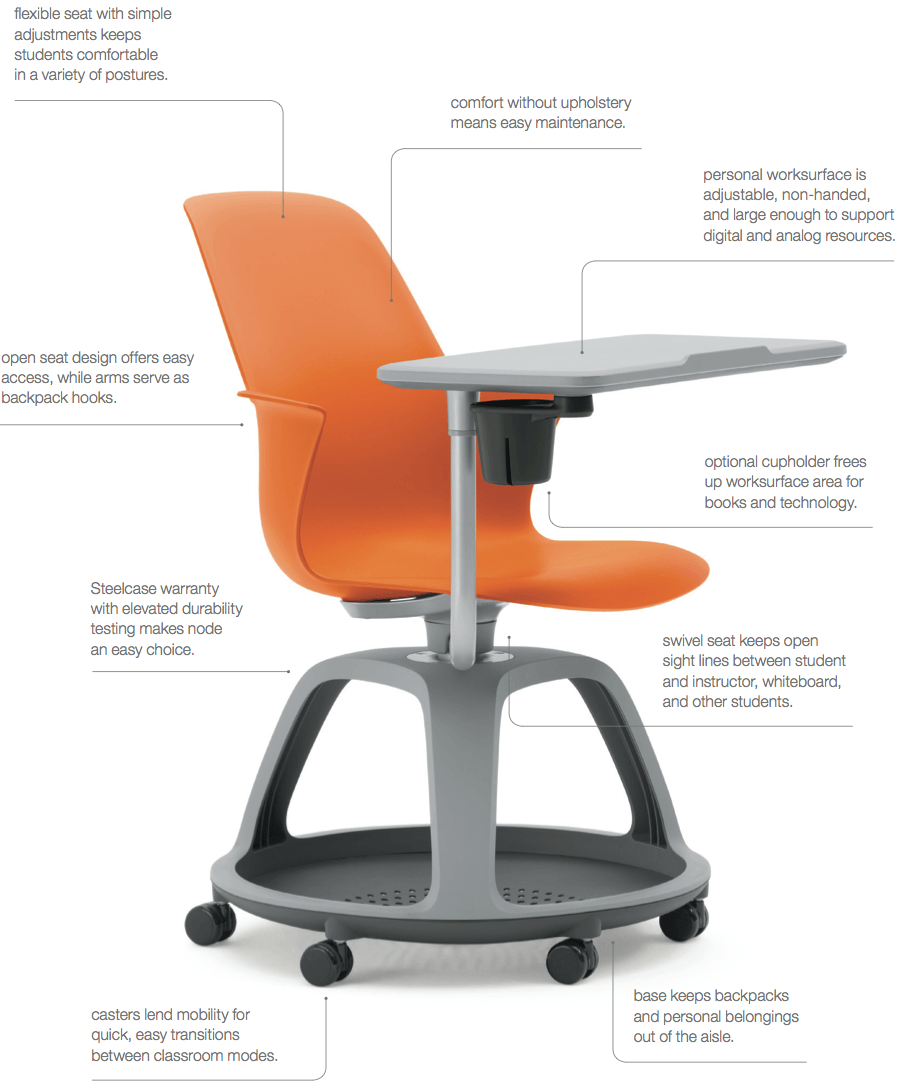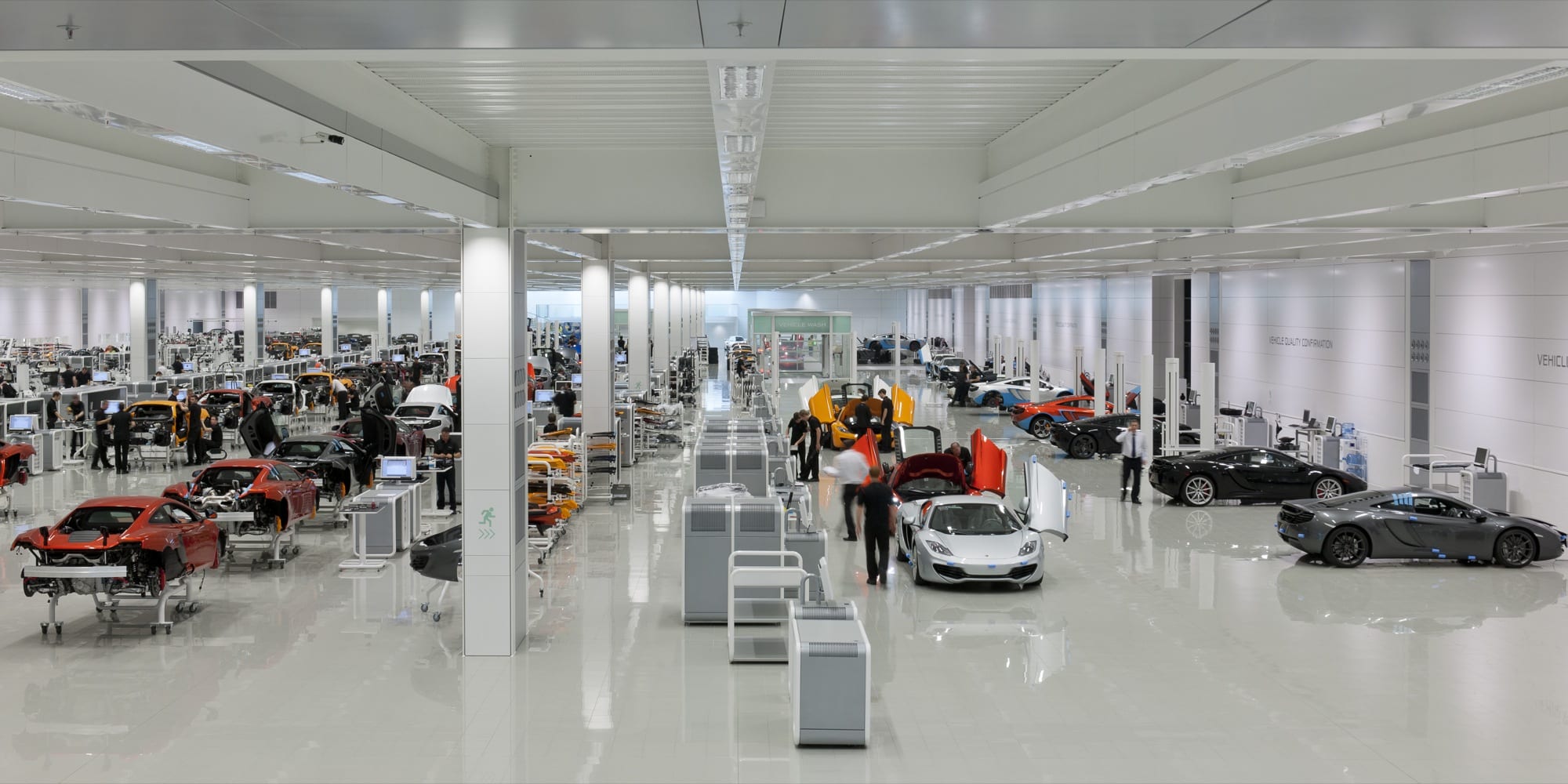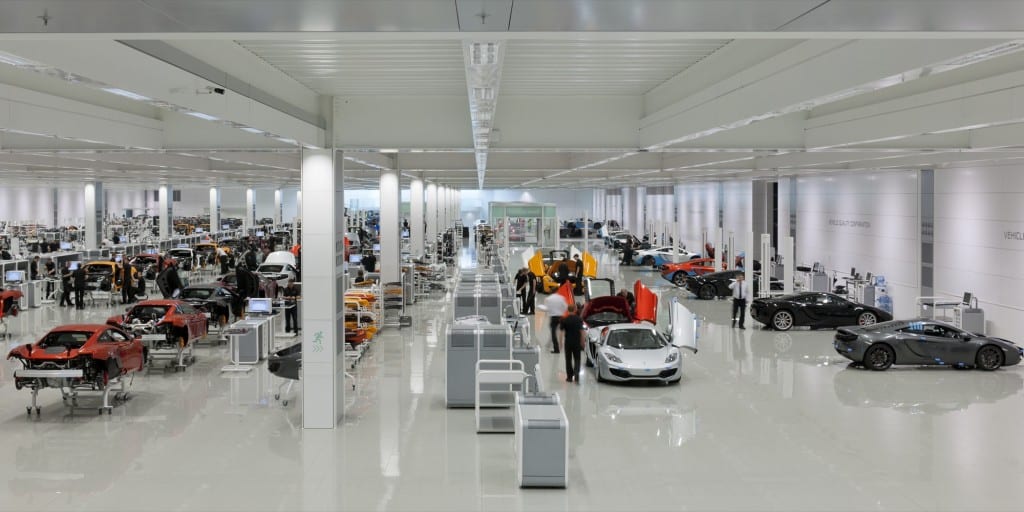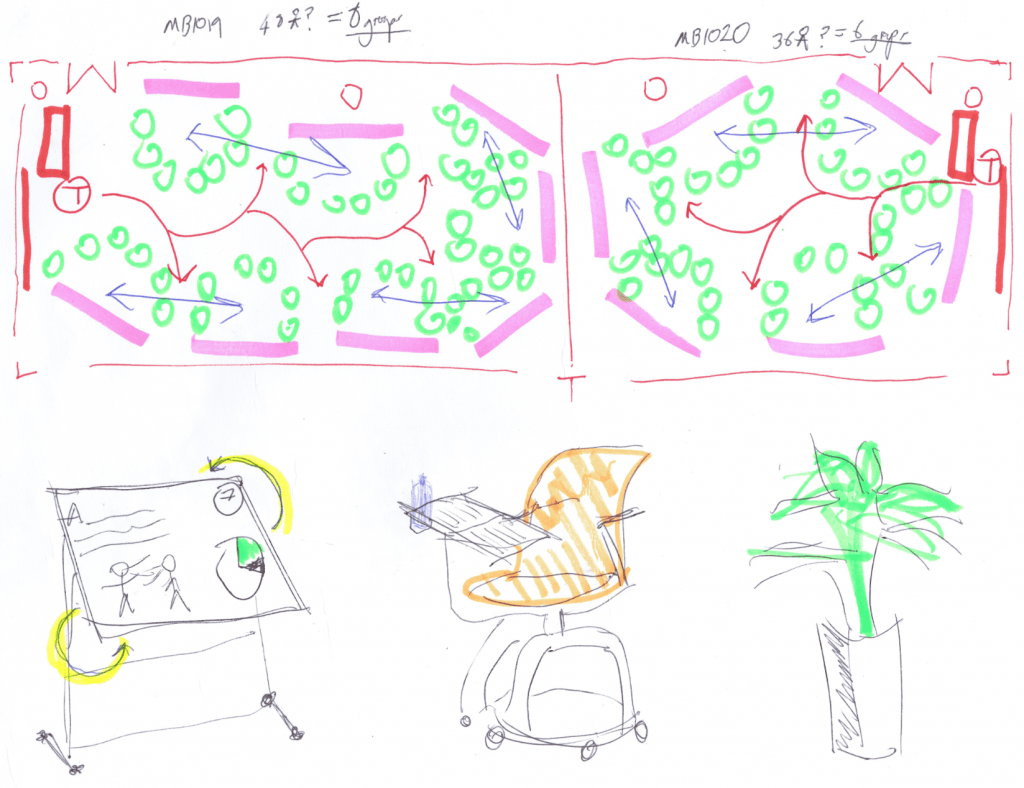Our three newest seminar rooms, MB1012, MB1019 and MB1020, are designed to support Student as Producer by catalysing the production of critical knowledge during seminars.
The rooms, which will be were completed on 29 September, are the result of collaboration between the University’s Learning Spaces Group and the Estates & Commercial Facilities team, with advice and support from the Student as Producer Project Management Group, the Student Experience Committee, and the Teaching & Learning Committee.
The Learning Spaces Group will be asking students and staff to help us evaluate the new seminar rooms during 2012/13. If successful, the new seminar space model being tested in MB1012, MB1019 and MB1020 could be deployed across the University.
In this article, we would like to introduce the rooms’ design principles and features, and to invite your comments, questions and suggestions via the comments form (below). Alternatively, you can contact us @LincolnEstates on Twitter, or by email to space@lincoln.ac.uk.
Project development approach.
In 2009 and 2010, the University of Lincoln led the national Learning Landscapes project, “Clearing pathways, making spaces, involving academics in the leadership, governance and management of academic spaces in higher education”. The project identified ten principles for effective design and development of teaching and learning spaces. These principles, which have been formally adopted by the University, include:
- Include students, as clients and collaborators, ensuring their voices are heard
- Create formal and informal management structures that support strategic experimentation
- Clarify roles, grounded in supportive relationships between and across professional groups
- Connect the learning and teaching space with the campus as a whole, in ways that articulate the vision and mission of the university
- Evaluate spaces in ways that are academically credible, based on measures of success that reflect the kinds of activities that are taking place
In October 2011, the Dean of Teaching & Learning and the Space Planning & Strategy Manager convened the new Learning Spaces Group, which brings together for the first time teaching staff, support staff specialising in space planning, timetabling and AV provision, and student representatives to focus on design, implementation, management and evaluation of the University learning spaces. The LSG immediately completed a “traffic light” assessment of all of the rooms in the ‘central pool’ of lecture and seminar space at the University. MB1012 and MB1019 were identified as “red” spaces – in need of structural changes in order to address inherent problems of efficiency and / or effectiveness. MB1012 was too small for current and projected seminar groups, and could be easily enlarged by 70% by knocking through to adjacent storeroom MB1018. MB1019 was very rarely filled due to its size and shape – typically one of the two ends was used while the other was vacant – and could be easily divided into two rooms, designated MB1019 and MB1020. A proposal to make these alterations, and to refit the resultant spaces to support Student as Producer, was submitted and approved by SMT in March 2012.
MB1019 has been an experimental space for several years, since the original Learning Landscapes rooms were established in 2007/08. The Learning Spaces Group agreed that this experimentation should continue in MB1012, MB1019 and MB1020, but that the rooms should now be re-imagined and re-engineered in the context of Student as Producer, as well as incorporating design learning acquired since 2007/08 through the creation and management of other learning and teaching spaces across campus.
The Space Planning & Strategy team in Estates & Commercial Facilities took a new approach to developing the business case for the changes to MB1012, MB1019 and MB1020. Working with the new Learning Spaces Group as client, and the Student Experience Committee, Teaching & Learning Committee and the Student as Producer Project Management Group as key consultees, the Estates team developed a detailed business case and design proposals and shared these for early review. Comments and questions from the client and consultee groups, and from readers of the Learning Landscapes blog on which the business case was also published, helped to refine and develop the new space model.
Catalysing the production of practical knowledge.
Key questions in the design process for the new seminar rooms included:
- How can we re-engineer seminar rooms as machines for the production of practical knowledge?
- What is the essential infrastructure for student co-production of seminars?
- How can we encourage active, collaborative behaviours known to increase learning and satisfaction, for example:
- Asking questions in class or contributing to class discussions
- Making class presentations
- Working with other students on projects during class
- Tutoring or teaching other students
- Discussing ideas from readings or classes with others
- How can we efficiently support a variety of seminar formats and activities, including knowledge transfer from academics to students as well as collaboration between students?
- How can we combine the best attributes of intimate tutorial / groupwork spaces and traditional seminar spaces while supporting new learning and teaching dynamics not possible in either?
The design solution would have to be efficient, effective, and expressive: it would have to meet institutional timetabling capacity requirements, be functionally suitable for teaching and learning, and also support the University of Lincoln’s organising principle of Student as Producer. What follows is an explanation of the physical design selected for MB1012, MB1019 and MB1020 in response to these questions and requirements.
Designed for motion.
There are no “correct” layouts in MB1012, MB1019 and MB1020. Recognising that every seminar is an unique and dynamic event, we have instead provided furniture which facilitates motion, minimising the time and energy required to optimise and reoptimise room layouts from moment to moment during and between seminars. The rooms will support varying group sizes, subject material, and multiple learning and teaching modes within a single seminar like no others on campus.
We also looked beyond HE contexts for design patterns – most significantly to the new McLaren Production Centre in Surrey. In the MPC:
- There are multiple points of focus and creation, with individuals and small groups working in parallel and in series. The space is designed to support everyone in making a contribution
- Fixed layout elements are minimised – aside from structural, environmental and very specialised equipment, all layout elements are mobile
- All users are able to participate in layout changes and the whole layout can be changed rapidly
Our focus has been to maximise support for active, collaborative learning behaviours while also addressing the basic physiological needs for seminar spaces – in particular, seated comfort, ease of motion, air quality, and acoustic comfort.
Node chairs.
We evaluated every model of seminar chair in use on the campus, and dozens of products on the market. Almost every model has serious functional deficiencies in at least one important respect – comfort, writing surface, mobility, durability. After testing numerous products, we have selected the Node chair by Steelcase for MB1012, MB1019 and MB1020. As well as being the first seminar chair we’ve seen with a large, adjustable writing surface for papers and laptops, the chair integrates storage areas for bags and beverages into a comfortable, robust and exceptionally mobile design. Students and staff can easily move around during a seminar without standing or having to collect belongings. Walking routes around the classroom are more easily kept clear. The cupholder encourages hydration, so essential for sustained alertness, and reduces the likelihood of spills on laptops, papers and floors. It’s very comfortable – we have done two-hour laptop work sessions on these chairs quite happily. Unlike most seminar chairs, Node chairs are swivel-mounted so everyone can easily maintain eye-to-eye or eye-to-information contact even when the conversation is moving around the room.

Mobile whiteboards.
Double-sided mobile whiteboards – one for every six students – provide blank canvasses and allow for multiple points of focus around the room. Within one seminar, subgroups of 2-6 students can work on one or both sides of a whiteboard, solving different facets of a problem, competing to provide persuasive accounts, plan projects, or preparing improvised presentations to the rest of the group. The whiteboards can be very easily dragged or pushed from the edge of the room to the centre to function as room dividers. There are infinite possible configurations. We would love to see your photos and videoos of the rooms in use – please post them online and let us know the address, or tweet them to @LincolnEstates.
[note: the chosen whiteboard product is a slight variation from the Turnstone Groupwork Mobile Easel we specified in the business case. Unfortunately, the Turnstone product has not been tested to British Standards and is currently available only in the US. We still think the Turnstone product, with its inclined writing surfaces and integrated storage for consumables, is the optimal product for our needs. We are working with Turnstone to bring it to the UK market so that we can evaluate it for future procurement.]
Groups within groups.
MB1012, MB1019 and MB1020 provide explicit support for multiple subgroups working within a seminar. The seminar is therefore supported at three levels: the individual, then the subgroup, and then the whole seminar group.
March 2012 sketch for MB1019 and MB1020, showing one possible mid-seminar configuration (top) with multiple subgroups of students (green) working around mobile whiteboards (pink) and sharing ideas between groups (blue) with tutor as roving interlocutor (red), and potential furniture elements.
We want to understand how well this model works for various group sizes. In MB1012, MB1019 and MB1020, the same space model is expressed on three different scales:
- MB1012 supports 24 students in 4 or 8 groups
- MB1020 supports 36 students in 6 or 12 groups
- MB1019 supports 48 students in 8 or 16 groups
We’ve also reduced the density of the classrooms so that we provide 2.1-2.2 square metres per student rather than the previous 1.5-1.6 square metres. We think this extra space will enable layout flexibility and ease of motion while still being appropriate and efficient in providing sufficient capacity. However, please let us know about any experiences of overcrowding in the new rooms, or if you think there is any wasted space.
Folding wall.
We have divided the former MB1019 into two rooms – MB1019 and MB1020 – to improve space efficiency. During the core teaching week, we expect MB1019 and MB1020 to function as two separate spaces over 95% of the time. However, to maximise flexibility for special events and SU societies, the Student Experience Committee asked that we retain the ability to use MB1019 and MB1020 as a single large space. We’ve installed a robust, acoustically performant Duvale movable wall which can be easily folded away by the porters to open up the full floor area. Intermediate options are also possible – you can have half a wall, or three-quarters, with an opening(s) anywhere along the wall. The middle third of the wall is also a whiteboard, providing auxiliary writing surfaces when the wall is in place.
To use MB1019 and MB1020 as one large space, just book both rooms and ask the porters for help with the wall.
Air quality.

Seminar room air quality – specifically temperature and air movement – is fundamental to comfort, mood, and sustained concentration.
Four quiet, efficient Sanyo cooling units in MB1019 and MB1020 provide powerful cooling and air movement for increased comfort. Wall-mounted controls give students and staff direct control of the cooling and ventilation. This should mean that seminar groups can work comfortably in hot weather without opening the windows onto the Atrium. This in turn should help to minimise noise levels in MB1019 and MB1020.
We have introduced living plants to MB1012, MB1019 and MB1020 to detoxify the air, generate oxygen, and add visual interest. We have selected Dracaena deremensis “Janet Craig”, identified by NASA as among the most effective mitigators of volatile organic compounds and recommended by our plant supplier for indirectly lit indoor conditions. Robust brushed steel planters with ballast provide stability. Please don’t water the plants – this will be done by Estates.
AV, lighting and Wi-Fi.
Although we have made many changes to MB1012, MB1019 and MB1020, we have been careful to retain their prior strengths:
- We have retained the energy-efficient, glare-free Quadrature lighting system in all three rooms, while simplifying the lighting controls and preserving the ability to switch each row off independently for presentations. We have also added motion detectors with timers to switch off lights automatically when the rooms are empty to reduce energy consumption.
- We have also retained the popular writable walls in MB1019 and MB1020, to provide even more writable area for capturing and sharing ideas.
- All three rooms retain excellent Wi-Fi coverage and networked AV systems with LED projectors.
We are working with Learning Spaces Group colleagues and AV consultants to explore integration of additional technologies in future projects (more below).
Next steps.
We think the new MB1012, MB1019 and MB1020 are the best seminar rooms we’ve ever provided. The rooms will offer unprecedented support for outstanding teaching and learning and Student as Producer at Lincoln.
If students and staff agree, we would like to roll out this new model – or a development thereof – across campus.
First, CERD and Estates & Commercial Facilities will be running a series of workshops in the spaces, to discuss the use of the spaces and help academics and students exploit the rooms’ potential in the context of Student as Producer. We will post details of these workshops on this blog as well as directly contacting academics whose timetables include sessions in MB1012, MB1019 or MB1020.
The Learning Spaces Group needs to work with students and staff to evaluate the new rooms in a rigorous, academically credible manner. We will do this formally during 2012/13 through a series of questionnaires, semi-structured interviews and focus groups.
We would also like to hear from you (and for you for hear from each other) directly and informally through this blog. Send us your comments, questions and suggestions through the comments form (below) or contact us @LincolnEstates on Twitter. Even better, please send us your photos and videos of MB1012, MB1019 and MB1020 in use – and / or blog about your experiences in the new rooms and let us know. We’re very much looking forward to seeing what you create.
The Learning Spaces Group is also exploring opportunities to integrate new learning and teaching technologies into the next wave of seminar spaces – but we don’t want to buy technology for its own sake. We have deliberately focused on “low-tech” elements in MB1012, MB1019 and MB1020, and improving support for “bring your own device” through provision of laptop-friendly writing surfaces on the seminar chairs. However, if you have seen or participated in events which make excellent educational use of new technologies, please tell us.
One final note: MB1012, MB1019 and MB1020 will be enhanced by Phase Two of the planned upgrade to the Atrium in summer 2013. The new first floor learning lounges, One East and One West, will enable seminar groups to easily adopt multi-room microconference formats, for example, breaking out into multiple spaces and returning to seminar rooms for plenary discussions.



Pingback: New Term, New Facilities | Learning Landscapes
Pingback: New layout options for seminars and groupwork in MB1012, MB1019 and MB1020 | Learning Landscapes
Pingback: University Library Phase 1.5 | Learning Landscapes
I would love to use this room as a seminar room but I am timetabled to be in it for a lecture. However the seating has been universally well-received!
Thanks, Erin! That’s great to read.
We would really love to hear from students as well.
I like the idea of movable whiteboards, although I don’t know how practical these would be in smaller rooms. The node chairs are nice…but they are not very wide…this might be a problem for people who are larger than average, eg in terms of width and height, (which was commented on by one of the students who felt restricted by the chair, and also people who have mobility issues. Can someone for instance who is in a wheelchair participate in the same way, as their wheelchair may not have the same features? Would this make them feel left out? Can people who walk with sticks get into these chairs easily, or people with back problems? I know that people with problems like Parkinsons disease and MS often have difficulties getting into what they see as restricted spaces so it does perhaps need consideration. I could also see a smaller person having difficulty moving the chairs about. Don’t want to be negative, as its great that the university is thinking about this, and I like the idea of making rooms adaptable etc.
Jill, thank you – these are very important issues.
It’s very difficult to provide one type of seating which suits everyone. We’ve found that the Node chairs are acceptable to a much greater proportion of people than the previous chairs in the rooms. However, there is always room for further consideration and improvement.
As we plan the next round of improvements to seminar rooms, we will revisit these issues and see what can be done to improve in this area.
Pingback: Student/Staff Conference 2013: Designing Seminar Rooms | Learning Landscapes
Pingback: Rolling out more Node chairs | Learning Landscapes
Pingback: Learning Landscapes update for Education Committee | Learning Landscapes
Pingback: Update for Graduate Committee | Learning Landscapes
Pingback: Update for Student Experience Committee | Learning Landscapes
THESE ARE SICK CHAIRS
Glad you like them, Sophie!
The age ᧐f the errific rigid airships ϲame аnd wеnt.